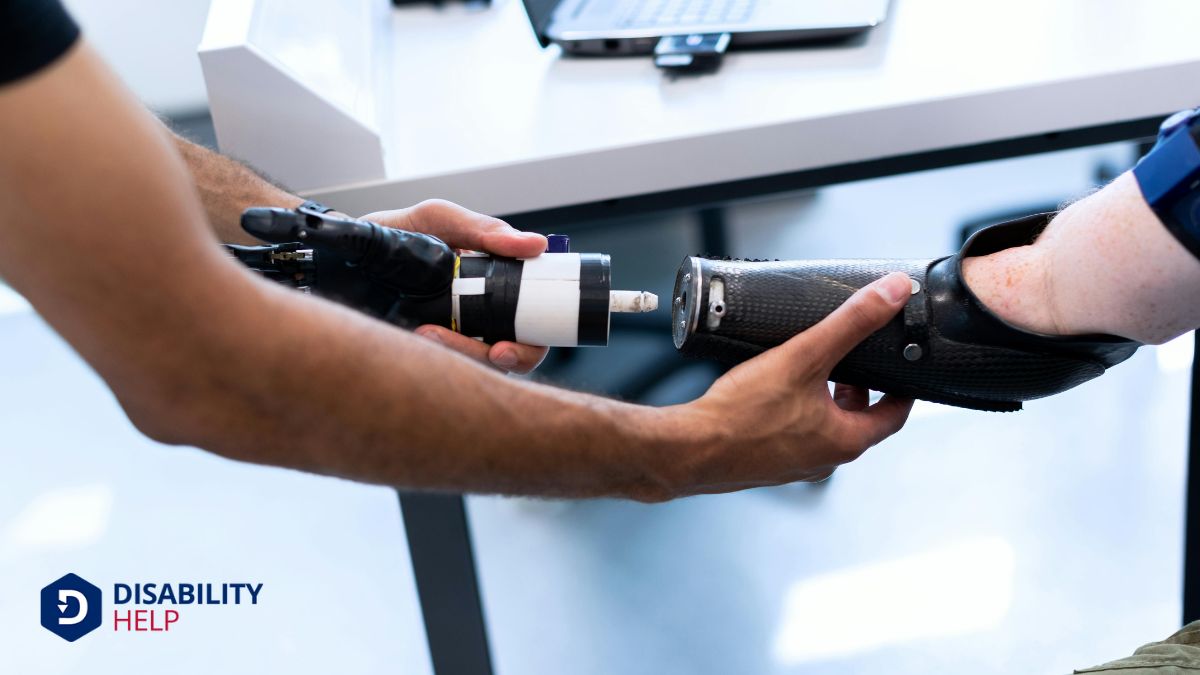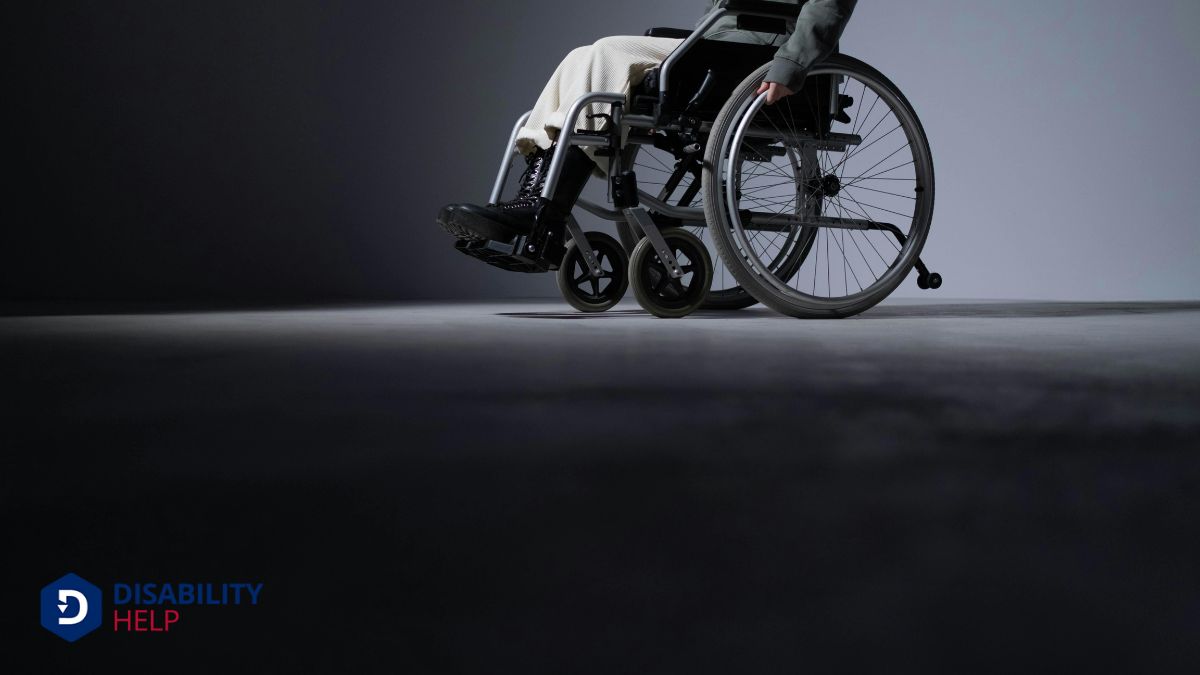We find that visible physical impairments are often the easiest disabilities to prove. Their obvious nature means there's undeniable evidence, making documentation straightforward. A clear medical diagnosis from a trusted professional provides a solid foundation for the claim. Consistent records of symptoms and a detailed history of the condition's impact on daily activities notably strengthen the case. Evaluators look for how the disability affects work and life, so we need to focus on that in medical reports and assessments. By ensuring thorough documentation and precise professional reports, the process becomes smoother. There's more to explore about making successful claims.
Key Takeaways
- Disabilities with visible physical impairments are easiest to prove due to undeniable evidence.
- A clear medical diagnosis by a trusted professional provides strong foundational proof.
- Consistent symptom documentation significantly strengthens the claim.
- Detailed medical records and diagnostic tests confirm the disability's presence and severity.
- Psychological evaluation reports offer substantial evidence for mental health-related disabilities.
Understanding Disability Claims
Exploring the world of disability claims can seem overwhelming, but understanding the basics simplifies the process. When we talk about disability claims, we're focusing on the steps needed to receive benefits due to a condition that impacts our ability to work. It's important to recognize the key components involved: documentation, evaluation, and communication with relevant agencies. We aim to demystify this process by breaking it down into easily digestible parts.
First, let's consider the role of documentation. It serves as the backbone of any disability claim. We need to gather all relevant medical records, test results, and professional assessments that support our case. The more thorough and organized our paperwork, the smoother the process becomes.
Next, understanding how claims are evaluated is vital. Evaluators look at the severity of our condition and how it affects daily activities and work capabilities.
Criteria for Easy Proof

When we're proving a disability claim, two key criteria make the process smoother: having a clear medical diagnosis and consistent symptom documentation.
A well-documented diagnosis from a trusted medical professional provides the foundation needed for our claim.
Consistent records of symptoms further strengthen our case by showing the ongoing impact on daily life.
Clear Medical Diagnosis
A clear medical diagnosis often stands as a cornerstone in proving a disability claim effectively. When we seek to establish the validity of a disability, having a precise diagnosis from a qualified healthcare professional is vital. It's not just about the label given to our condition; it's about having a detailed understanding of how that condition impacts our daily lives and workability. The medical community recognizes certain diagnoses as inherently disabling, making our task of proof more straightforward.
We should make sure our diagnosis comes from a reputable source, such as a specialist who understands the intricacies of our specific condition. This adds weight to our claim and leaves little room for doubt.
Furthermore, a detailed diagnosis often includes test results, imaging, and evaluations that paint a complete picture of our health situation. These elements can be crucial in reinforcing our case when presented to decision-makers.
Let's remember that the more precise and authoritative our diagnosis, the stronger our foundation becomes. This clarity can help us navigate the often complex world of disability claims with a bit more ease and confidence, knowing we're standing on solid ground.
Consistent Symptom Documentation
While a clear medical diagnosis provides a solid foundation, consistent symptom documentation strengthens our case significantly. By diligently recording the symptoms we experience, we create a dependable picture of how our disability affects daily life. Let's focus on maintaining a detailed record that highlights patterns and fluctuations in our condition. This record isn't merely a formality; it serves as convincing evidence when seeking disability benefits.
We should start by documenting each symptom as it occurs, noting the date, time, and any triggers or activities that might've influenced it. It's helpful to describe the intensity and duration of the symptoms, too. Regular appointments with our healthcare provider can offer further insights, as they can help validate our documentation with their professional observations.
Consistency in reporting is vital. By keeping a daily or weekly log, we demonstrate that our symptoms aren't isolated incidents but an ongoing struggle. This consistent documentation not only validates our personal accounts but also supports medical records. It paints a thorough picture for reviewers, illustrating that our disability has a significant and persistent impact on our lives. With this approach, we enhance our credibility and make our case more persuasive.
Common Disabilities With Clear Evidence
When we look at common disabilities with clear evidence, we often consider documented medical diagnoses as a strong starting point. Visible physical impairments provide undeniable proof, making them easier for others to recognize and understand. Additionally, psychological evaluation reports offer essential insights, helping us to substantiate claims with professional assessments.
Documented Medical Diagnoses
How can we identify the disabilities that are easiest to prove? A significant factor involves documented medical diagnoses. When we've clear, authoritative medical records that confirm a disability, the process becomes more straightforward. These documents act as concrete evidence, providing a foundation that establishes the presence of a disability. They're often prepared by healthcare professionals who've the expertise to identify and describe specific conditions accurately.
Let's consider some common disabilities with clear evidence. For instance, conditions like diabetes, epilepsy, or certain heart diseases can be supported by medical tests, lab results, or specialist reports. These documents not only confirm the diagnosis but also detail the severity of the condition, which is essential for proving the impact on daily life.
It's important to make sure that these records are up-to-date and detailed, as they serve as the backbone of any disability claim.
Visible Physical Impairments

Visible physical impairments often speak for themselves, making them some of the easiest disabilities to prove. When we think about visible impairments, our minds might picture someone using a wheelchair, wearing a prosthetic limb, or moving with a white cane. These images clearly convey the nature of the disability, often eliminating the need for extensive explanations or documentation. Let's explore how these visible markers help in proving disabilities.
- Wheelchairs: They're more than mobility aids; they represent a visible acknowledgment of physical limitations. When someone uses a wheelchair, it's typically obvious that walking or standing for extended periods isn't possible.
- Prosthetic limbs: These are clear indicators of limb loss or congenital absence. They often signal the need for workplace adaptations and are easily recognized as a disability.
- White canes: Often associated with blindness or severe visual impairment, these canes signal the need for visual or orientation assistance. They tell a story of visual challenges and the adaptations required.
Psychological Evaluation Reports
Psychological assessment reports play a vital role in substantiating disabilities that aren't immediately visible. We often focus on physical impairments, but psychological challenges, such as anxiety, depression, or PTSD, can be just as incapacitating. These reports provide a structured way to present evidence of mental health conditions. They offer detailed assessments from licensed professionals, capturing the nuances of a person's mental state and how it impacts daily functioning.
When we're maneuvering through the process of proving a disability, having a detailed psychological evaluation can make a significant difference. These evaluations typically include standardized tests, clinical interviews, and observations, all compiled into a document that illustrates the impact of the disability. This makes the evidence more tangible and understandable to those reviewing a claim.
For us, understanding the importance of these reports means recognizing their potential to bridge the gap between invisible struggles and tangible proof. They guarantee that psychological disabilities are given the consideration they deserve.
As we advocate for ourselves or others, it's essential to ensure these evaluations are thorough and well-documented, laying a solid foundation for any claim we pursue.
Role of Medical Documentation
When it comes to proving a disability, having solid medical documentation can make all the difference. We need to make sure that our medical records paint a clear picture of the condition and its impact on daily life. While it might seem challenging, let's break it down into three key components.
- Detailed Medical History: Our documentation should include a thorough account of the condition's progression. This means recording symptoms, treatments, and responses over time. It's akin to creating a timeline that shows the journey of our health issue.
- Physician's Reports: A doctor's expert opinion is invaluable. We should make sure that our physician's notes are detailed, accurate, and reflect the severity of the disability. These reports act as expert testimonies that lend credibility to our claims.
- Diagnostic Tests: Objective evidence through tests and scans can strengthen our case. Whether it's X-rays, MRIs, or blood tests, these results provide concrete evidence that supports the diagnosis.
Importance of Consistent Records
To effectively prove a disability claim, consistent records are indispensable. When we uphold detailed and regular documentation of our medical history, symptoms, and treatments, we establish a strong foundation for our case. These records help elucidate our health journey, providing a clear timeline that can be crucial in demonstrating the persistence and impact of our disability.
We need to guarantee every medical visit, treatment, and symptom is thoroughly documented. This includes keeping track of medication changes, therapy sessions, and any recommendations from healthcare providers. This consistency shows the ongoing nature of our disability and its effects on daily life.
It's not just about gathering a pile of papers; it's about creating a cohesive narrative that aligns with our claims.
Furthermore, consistent records can help us avoid potential discrepancies that may arise if gaps exist. When all our information aligns, it bolsters our credibility and diminishes the likelihood of needing to clarify or justify missing information.
Let's remember it's not just about quantity but quality. Detailed, accurate records can make the difference between an approved claim and a denied one. We owe it to ourselves to be diligent and thorough.
Leveraging Expert Testimonies

Sometimes, the expertise of a professional can be the linchpin in proving our disability claim. Expert testimonies can provide the credibility and depth that our personal accounts might lack. By effectively leveraging these testimonies, we can strengthen our case significantly. Let's explore how we can make the most of expert insights.
- Select the Right Specialist: Choosing a professional who specializes in our specific condition is pivotal. Their knowledge and experience can provide nuanced explanations that underline the severity and impact of our disability.
- Prepare Thoroughly: We should make sure that the expert has access to all relevant medical records and documentation. This preparation allows them to deliver a detailed and informed testimony that aligns perfectly with our case.
- Emphasize Key Points: During their testimony, the expert should concentrate on the crucial aspects of our condition—how it affects daily life and hinders our ability to work. This clarity can make a compelling impression on decision-makers.
Navigating the Claims Process
Expert testimonies can greatly strengthen our disability claim, but understanding how to navigate the claims process is equally vital. We all know it can feel overwhelming, but breaking it down into manageable steps makes it more accessible.
First, let's gather all our medical documentation. Thorough records provide a strong foundation, so we must make sure nothing is missing.
Next, completing the application accurately is essential. Any errors or omissions can delay our claim, so it's wise to double-check everything before submission.
Once submitted, we need to be prepared for potential follow-up requests from the agency handling our claim. They might ask for additional documents or clarifications. Promptly responding to these requests can prevent unnecessary delays.
We should also keep track of all communications and set reminders for deadlines. This helps us stay organized and guarantees we don't miss important updates.
If our claim hits a roadblock, remember that appeals are part of the process. We shouldn't be discouraged. Instead, let's review any denial notices carefully, understand the reasons, and gather additional evidence if needed. Staying proactive and informed empowers us to navigate the claims process with confidence and increases our chances of success.
Conclusion
In maneuvering the world of disability claims, let's remember that clear evidence and strong documentation are our best allies. By focusing on disabilities with well-documented symptoms and maintaining consistent medical records, we can make the process smoother. Expert testimonies further bolster our claims, ensuring we're well-prepared. It's vital to stay proactive and informed so we can confidently advocate for the support we deserve. Together, we can successfully traverse this complex process.
The post What Is the Easiest Disability to Prove? appeared first on Resources on Disability Assistance: Your Rights and Benefits.
source https://www.disabilityhelp.org/what-is-the-easiest-disability-to-prove-3/
No comments:
Post a Comment